ASRock Core 100HT-BD : Bringing HTPCs to the Mainstream Market [UPDATED : Noise Issue]
by Ganesh T S on July 19, 2010 9:34 PM EST- Posted in
- Home Theater
- Arrandale
- ASRock
- Media Streamer
- Core i3
- HTPC
One of the most interesting aspects of the Arrandale platform is the fact that the GPU is integrated in the same package as the CPU. The GPU die also contains the PCIe and DDR3 memory controller. While the main CPU is fabricated in the 32nm process, the GPU die is fabricated in the 45nm process. Placing the GPU and CPU in the same package saves on power and also board costs. The graphics part of the GPU die in the package is an evolutionary version of the Intel G45 IGP. A comparison of the Intel HD Graphics in the Arrandales and the earlier G45 is provided below.

An interesting thing to note here is the availability of dynamic frequency scaling for the Arrandale GPU, which actually lowers the power consumption of the system. A 900 MHz GPU part on a typical Clarkdale system would up the TDP by 15W or more compared to the lowest end Clarkdale with a 733 MHz GPU. On the Core 100 HT-BD, however, overclocking doesn't require any special thermal arrangements. The higher frequencies kick in only when the load on the GPU becomes high.
We had earmarked the Clarkdales as the perfect HTPC platforms earlier this year. This Arrandale offering may actually tempt us to revise our opinions, given the form factor and the power profile. We will cover this in detail in the later sections. In the rest of this section, we will cover the features of the Intel HD Graphics engine, as it relates to HTPC users. Before going into the details, let us take a look at what Intel has improved in terms of video decode and processing in this iteration of their IGP.
DXVA Compatibility
Intel's support for DXVA came in for a lot of criticism during the G45 days. The paranoia inside the company made it impossible for open source enthusiasts to get hold of the special DXVA interface used by Intel. It used to be made available under NDA to various ISVs (Independent Software Vendors) such as Cyberlink, ArcSoft etc. Thankfully, things have been slowly changing for the better. Currently, most applications (except for VLC) are able to take advantage of the DXVA acceleration provided by the HD Graphics engine. The screenshot below gives us a quick idea of the DXVA capabilities of the Core i3-330M in the Core 100 HT-BD. It is interesting to observe that there is no VLD mode for VC-1, but we did observe 1080p VC-1 Blu-Rays play with less than 5% CPU usage on ArcSoft TMT. This just indicates that the interface to full acceleration mode for VC-1 is available only under NDA as of now.
HD Audio Bitstreaming
Right from its debut, the Arrandales have been able to bitstream HD audio from Blu-Ray discs played back through Cyberlink's PowerDVD or ArcSoft TMT. The Core 100 HT-BD is no different. We were able to play back all Blu-Rays with bitstreaming to the AV receiver, as the following screenshots show. In addition, hardware acceleration with Intel HD Graphics shows its class, with low CPU utilization being observed during playback. Despite the red spikes observed in the DPC Latency Checker program, we didn't notice any audio dropouts or stutters in the video.
Using the open source ffdshow Audio Decoder, HD audio can also be bitstreamed out of standalone MKVs and M2TS files. (More on this in the next section)
With the above features, Intel HD Graphics seems to be a winner, and the Core 100 HT-BD could potentially be the utopian HTPC that enthusiasts have been searching for. Is that really the case?
Driver Support - Intel Misses the Boat!
Since the release of the G45, videophiles have been clamouring for the support of 23.976 fps display refresh rate. Intel caved in and released a driver where you could choose 23 Hz in the graphics control panel. Unfortunately, this only results in a refresh rate of 24 fps. While watching videos encoded at 23.976 fps, this results in a small stutter every 40 seconds or so. Most people get past this by setting the refresh rate of their display to 60 Hz. However, dedicated enthusiasts still see this as a major shortcoming of the platform.
Another issue which has remained since the G45 days is the efforts taken to open up the DXVA specifications of the GPU for open source developers. Lot of progress has been made over the years, but full VC-1 decode acceleration remains elusive in applications like MPC-HC or VLC. As we discussed in the DXVA Compatibility subsection, the VC1_VLD mode which is commonly utilized by open source video decoders is absent. However, Intel's marketing team does indicate complete VC-1 decode acceleration. We can only surmise that this is made available for the Microsoft and other ISV decoders to make use of.
The drivers supposedly support advanced deinterlacing, but users do not have as much control over the algorithms used as they have when using ATI HTPC cards such as the Radeon 5xxx series. Noise reduction algorithms are also not transparent to the users. The frequency of driver updates is rather low, and issues continue to remain unaddressed.
If the end user can put up with these iGPU limitations (personally, I can), the Core 100 HT-BD is indeed a very good choice. This will be further elaborated in the next few sections.


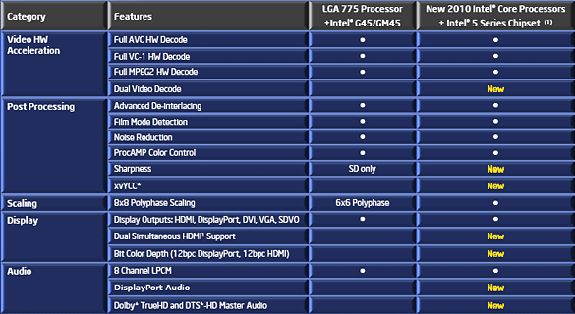
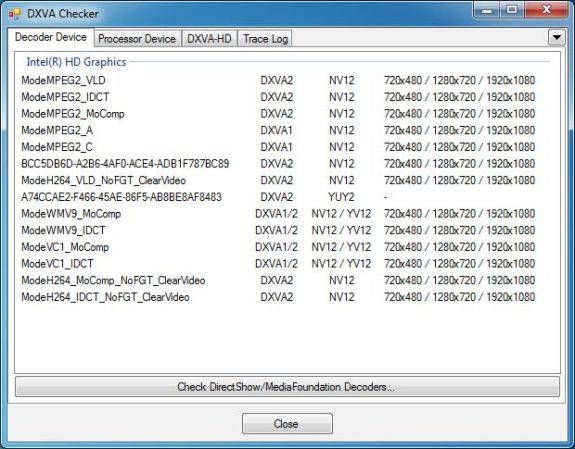
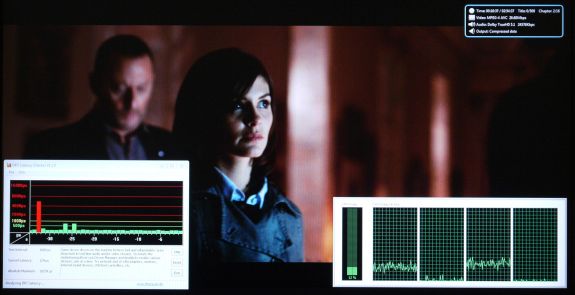
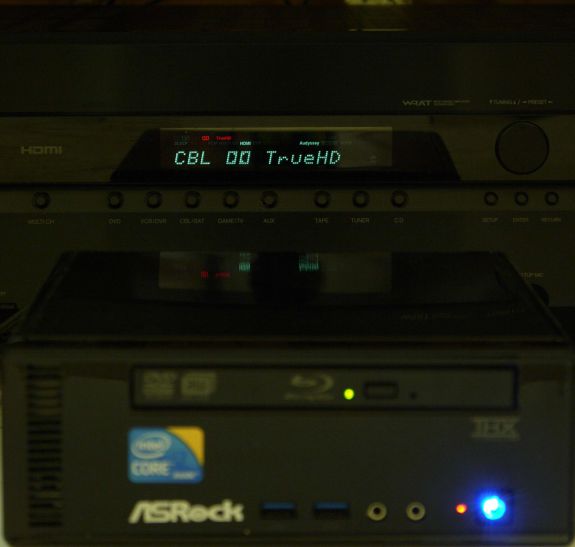
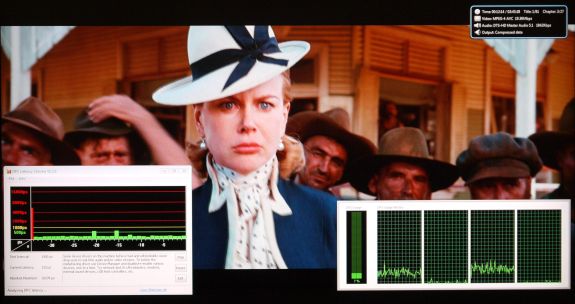
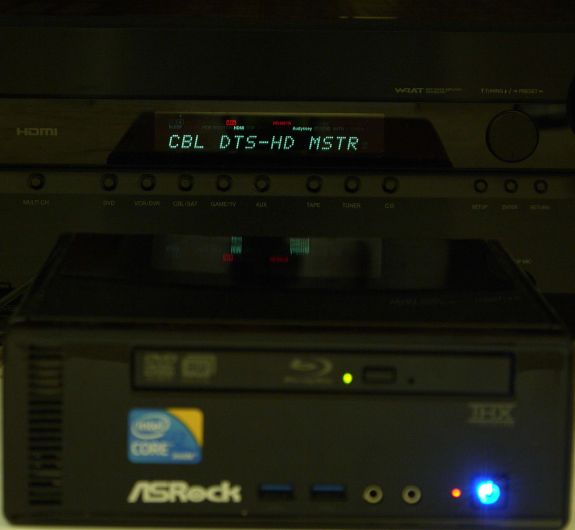








107 Comments
View All Comments
ganeshts - Tuesday, July 20, 2010 - link
Shadowmaster625,This unit is slightly on the leading edge (The Arrandales were introduced around 6 months back).
With $100, it is difficult to get a notebook with HD audio bitstreaming and Blu-Ray drive, even second hand.
For the set of features it offers, we think it is a decent value for money. As for this being mainstream, I am sure there are many who spend $700 or so on a PC once every 4 - 5 years, and this is a perfect system for such people.
tmservo - Tuesday, July 20, 2010 - link
Pray tell.. if you've got a way to get a case/motherboard/ram/hdd/bluray drive and get 1080P for under $100, I'm interested. Somehow, I don't see that as at all feasible. Hell, even the cheapest AMD CPU + board and a cheap case alone is $100. So, however you shoe horn in all those other components, or then get the software to run them (supplied here) ..But, if you'd like.. give me a part list of what you can get that anyone could go buy, NEW, for $100.
Or, find me a used laptop on Ebay with HDMI output that does 1080P and has a bluray drive for $100. Even if it has no screen. Needs to have a HDD, Memory, BD drive though.. and function.
cjs150 - Tuesday, July 20, 2010 - link
53 db!! That is just plain daft.I suspect the design of the case does not help.
I have just built a mini-server using a Atom 510 and I am sure the M/B was ASrock, mini-itx format and a PCI-E slot. Easiest build I have done even though the case was not perfect. As a server it is effectively silent
I do not want an HTPC that creates any more noise other than maybe a slow running 140mm+ fan
ganeshts - Tuesday, July 20, 2010 - link
cjs150,Note that the 53dB is under full load, when all threads are pegged at 100%, and it is just inches away from the unit. The farther you are, the lesser it is, and at 8ft, it was barely discernible.
Under idle, the unit is advertised as having 25dB noise, measured in an anechoic chamber (Refer YouTube video from their marketing department).
I would say, for HTPC purposes, the noise from the unit is definitely within limits.
tech6 - Tuesday, July 20, 2010 - link
Nice work Ganesh - I look forward to further HTPC reviews to see how the AMD platforms compete.shamans33 - Tuesday, July 20, 2010 - link
Ganesh,I'm curious as to how the IR receiver is connected to the motherboard...USB and/or motherboard headers? Is it possible to do a force power off (if let's say the system is frozen) or to do a cold boot up?
Thanks for reviewing more SFF items.
ganeshts - Tuesday, July 20, 2010 - link
shamans33,I believe the IR receiver is connected to a dedicated NuvoTon chip on the motherboard.
The power off button on the remote puts the system in sleep mode when the unit is in operation. In my usage scenario, I had the AC adapter connected to the back of the unit, and the system was completely shutdown. The Power button on the remote was able to boot up the unit without issues (even with Instant Boot disabled).
johnspierce - Tuesday, July 20, 2010 - link
Hi Ganesh,Very nice review, extremely thorough, thank you!
I have a question about how the HDMI handshaking works with the ASRock.
I have built several HTPC's with both NVidia and ATI HDMI-out video cards and it seems they all have a problem when I have it plugged into my HDMI-switching Onkyo receiver.
When I switch from HTPC to DVR and don't change back for awhile, it always has a problem with the display coming "alive" on the switch back. Turning the monitor off and on re-establishes the handshake, but this is an annoying trait of the current crop of video cards. Does the ASRock have this problem?
Also, I wanted to "weigh in" on the lack of a TV tuner -- I really think this is quickly becoming a non-issue since I now use an OTA receiver for local HD and everything else gets streamed. TV Tuners will soon be an anachronism in my opinion.
Thanks,
John
ganeshts - Tuesday, July 20, 2010 - link
johnspierce,I have the same handshaking issue with my ATI based HTPC.
As far as I could see, I didn't have the handshaking issue with the ASRock setup, but the whole testing was done with 2 displays connected to it. I will do a 'standalone' test and get back to you on this.
Aikouka - Tuesday, July 20, 2010 - link
A very interesting product indeed, but I've got my own three cents to provide!1) The price. Ouch... when I first opened this review, I checked the Egg to see if they had them in. Of course as the review mentions, I ended up finding the DVD-equipped model for $650. Tack on another $130 for Windows 7 Professional (note, I use Pro since it enables remoting in, which I find indispensible for a HTPC) and you've got nearly $800. If the Blu-Ray-equipped model retails for $700, you get $830 with the OS and then you have to consider that the blu-ray playback software will set you back another $100 (unless you can find them on sale... TMT3 has been on sale for $75 before).
I've spec'd out a few HTPCs in my quest to find the Holy Grail of HTPC devices, and if price were my main concern, I'd still probably go with my own build. I never put my HTPCs to sleep, so I'm honestly not even worried about that aspect and I don't mind a slightly higher power consumption.
2) The VIA VT2020. Have you noticed a strange amount of memory use from having this? I have an ASUS P7P55D-E Premium motherboard, which also features the same VIA audio chip, and I have god awful levels of memory use from audiodg.exe (Window 7's audio "controller"). At one point before upgrading my BIOS, I would literally see 800MB of memory being used by it. Last night I checked and I had 130MB of memory being used and I only had a single mp3 open. The worst part is that the last time I checked, VIA does not provide audio drivers for that chip. On their website they said that it was manufactured specifically for ASUS and to check their website for drivers.
But who knows... the strange things I see are possibly just issues with the P7P55D-E Premium... it's a god awful motherboard that was released with buggy BIOS revisions and it's no wonder you can't even buy it from NewEgg anymore.
3) The Front. Why do people want to see things like USB ports, bright blue LEDs and 3.5mm ports on the front of entertainment center components? The worst offender of the "sleak front" has to be that ghastly Intel i3 Inside sticker. I'd rather the connections be hidden under some sort of flap or door if they absolutely have to be on the front.
4) The remote. As something to mention, when I was discussing HTPC stuff on the Anandtech forums, a user clued me in on a nice Gyration MPC-capable remote that you could buy off eBay (from Lenovo it looks like) for only $50 that provided some mouse support if you ever needed it. I have to say that I quite like it so far and it might be something to look into if you don't like IR remotes. The only negative aspect is the ugly and obtuse dongle.
5) The comparison. It'd be nice to see how this item really compares to it's cousin, the ATOM-based version. Given the blu-ray version is available for $500 on NewEgg, does it handle all the necessary playback? A $200 savings for slightly longer application loads might be somewhat advantageous. Right now, I literally just leave my HTPC turned on 24/7 with WMC loaded up, so other than any necessary start-ups/shut-downs, I may see very little difference with the ATOM version.